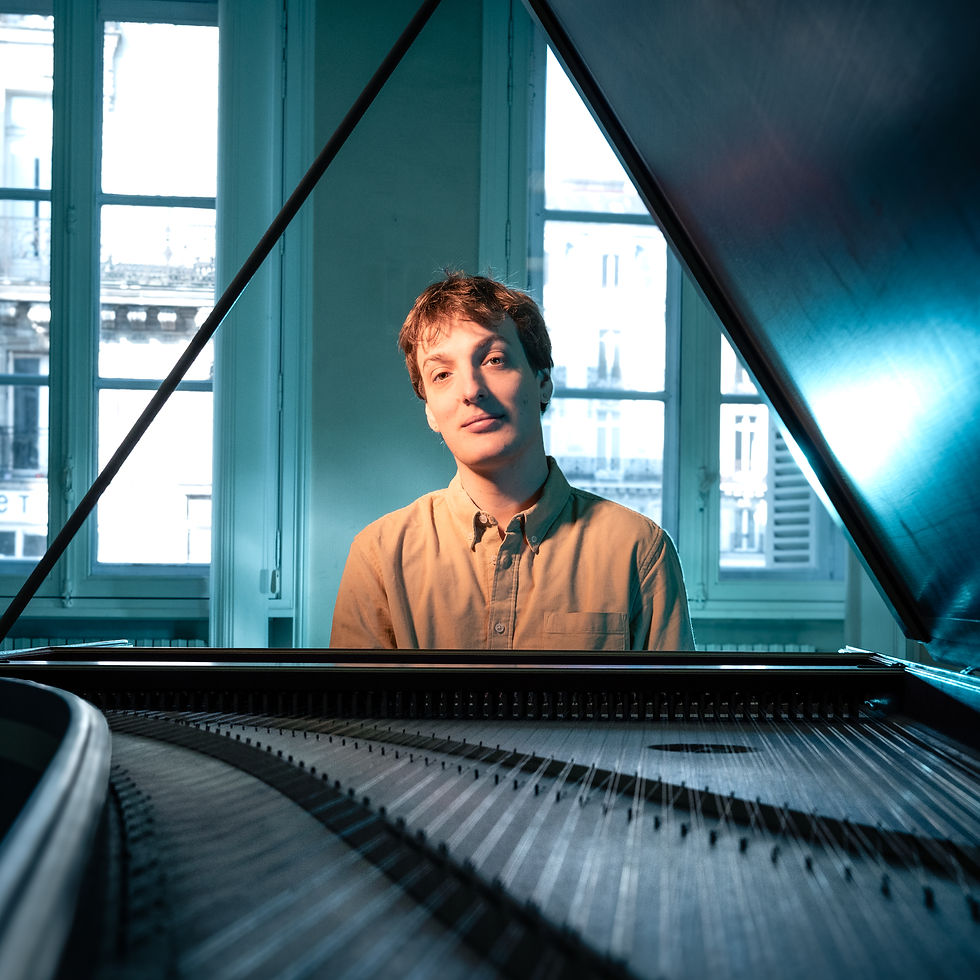
The Time Machine
Rose Dehors : sackbut
David Chevallier : theorbo, compositions
Etienne Manchon : harpsichord
Atsushi Sakaï : bass viol
Temporal paradox : a paradox concerning time, the passage of time or the fictitious consequences of time travel.
Isn't playing contemporary jazz on 17th-century instruments a temporal paradox?
What better way to illustrate this point than with H.G. Wells's famous work ‘The Time Machine’?
The 4 soloists who make up this group have the particularity of playing both ancient and modern instruments, ancient and contemporary music, whether written or improvised.
Jazz quartet on period instruments
After H.G. Wells novel.

This specificity makes it possible to form a quartet that functions like any jazz ensemble today, with a sound that is totally new to this form of expression, since it uses only instruments typical of the baroque period.
The concert follows the construction of Wells's novel, with each chapter inspiring composition and improvisation.
A projected or broadcast summary allows the listener to feel the connection between the literary work and its musical setting.
The musicians of ‘The Time Machine’ invite you to take a journey through time and multiple soundscapes.




A few days after the explorer's departure, his guests turn up at his house, discovering that he is missing and wondering whether he is serious. But the explorer suddenly appears, dirty, hungry and visibly exhausted. He confirms that he has just returned from a trip back in time and is about to tell his guests all about his adventures.
That evening, the explorer realises to his horror that his machine has disappeared. Panicking, he searched like mad for it, but his efforts to find it were in vain.
The little creatures gave him no help, and he collapsed, exhausted and in despair. When he regains his senses the next day, he discovers that his machine has been dragged to the pedestal of a large statue of a Sphinx, and mysteriously hidden inside.
Unable to open it, he decides to be patient, keeping an eye on the surroundings and trying to learn how to communicate with the little creatures.
Overwhelmed and now convinced that the Elois are in fact the Morlocks' livestock, the explorer is surprised to find the pedestal of the Sphinx open. His machine is indeed inside. But it's a trap: the trapdoor that gave access to the cache closes on him.
The Morlocks arrive, and it's only by the skin of his teeth that the explorer manages to activate his machine and leave this terrifying future.
The explorer's story comes to an end, but his audience cannot believe the reality of what they have been told.
The guests go home, convinced of their host's vivid imagination.
Tired of doubt, the narrator nevertheless decides to return the next day.
He finds the explorer about to set off on another journey through time, armed with a camera and determined to bring back some evidence this time.
But the explorer never returned from this second journey.